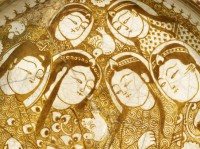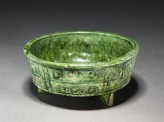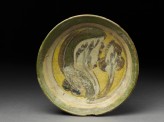Islamic Ceramics trail
Explore over one thousand years of development in Islamic ceramics through our extensive collection.

- This is a visual browsing tool that maps objects in this publication, gallery or collection trail by date of creation onto a timeline.
- The circular markers indicate where objects are on the timeline.
- The size of the markers indicates the relative number of objects at that point on the timeline.
- Hover over a marker to find out which objects are represented at that point in time.
- To expand, collapse or hide the timeline, click these symbols
 found at the top right of the timeline.
found at the top right of the timeline.
- 780
- 820
- 860
- 900
- 940
- 980
- 1020
- 1060
- 1100
- 1140
- 1180
- 1220
- 1260
- 1300
- 1340
- 1380
- 1420
- 1460
- 1500
- 1540
- 1580
- 1620
The ceramic production of the early Islamic period is very similar to that of the preceding centuries, and it is not always easy to distinguish the early Islamic from the pre-Islamic production.
Unglazed ware
Ceramics manufacture in the 7th and 8th centuries focused on functional ware, such as cooking, storage, and transport vessels. The vast majority of these wares were unglazed, and this would hold true for this type of ware up to more recent times. However, these completely plain wares were made alongside decorative pieces showing inventive incised, applied, and stamped decoration.
Glazed ware
Monochrome glazes had been used in the Middle East during previous centuries to provide vessels with a smooth, non-porous surface that could hold liquids and be cleaned easily. Green-blue alkaline-glazed vessels made during the Parthian (3rd century BC - 3rd century AD) and Sasanian (3rd - 7th century AD) periods continued to be manufactured in large numbers in the first centuries of Islam. Some of these wares travelled widely as containers for export goods. Fragments of large, alkaline-glazed jars have been found from the East African coast all the way to the Far East, along the maritime trade routes.
There are some early examples from the earliest centuries of Islam of ceramics that were glazed in different colours for decorative purposes, and these might have paved the way for more elaborate examples over the next few centuries.
These pieces do not anticipate the major innovations that would come about with the development of opaque white tin glaze during the 9th century, which had a major impact on ceramic production in both the Islamic world and Europe.
© 2013 University of Oxford - Ashmolean Museum




